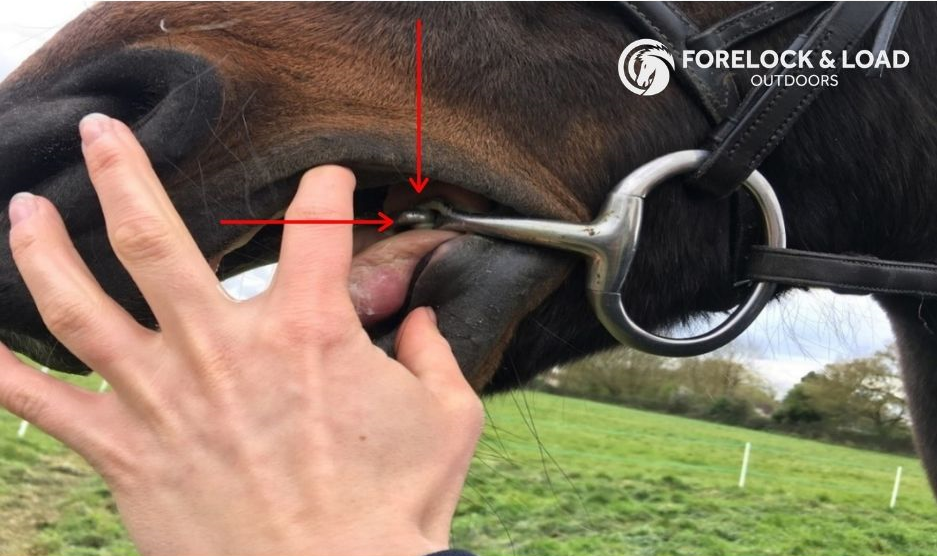In the continuation of our bitting blog our trained consultants Kirstie and Olivia Turner Animal Behaviour Consultant discuss rein tension and the placement of the bit in your horses mouth. This is the last stage of a bitting consultation, a very ‘belt and braces’ approach to find the perfect bitting solution for your horse.
So, what is rein tension?
Rein tension is the force created by the rider as they apply pressure to the reins. This force travels along the reins and acts on the bit. All bits will rotate under rein tension. It is important to take this into account when checking the bit fit. If you can get someone to pick up a contact on the rein, so you can see how the bit has moved in the mouth and therefore how it is functioning. Olivia and Kirstie will be talking about this in greater depth in a later blog.
How to check rein tension and bit placement
Put your horse’s bridle on with the bit and go back through the table and questions 1-7 (if you haven’t already done this revisit our previous blog here ) Now note how things have changed and where the bit is sitting and what is going on in your horse’s mouth.
Are the bit rings level? Is it sitting evenly on your horse’s face? This is also where we start to look at the size of the bit.

A Fixed Cheek Bit – how it should fit at rest

A Loose Ring Bit – how it should fit at rest

How ‘tightly’ should a bit fit in the mouth?
We are looking for a snug fit without the bit being too tight. We need to be mindful the bit is not touching the molars, and this can happen when the horse has a short smile. Often if the size is incorrect and the bit is too big, we overcompensate by putting the bit higher in the mouth to try and make it fit.


To help you here is a short video on bit fit
We are combining how the bit sits in the mouth with the next three steps. Often a horse will chew, fiddle with the bit when the bit is first placed in the mouth, maybe this is to warm it up or in anticipation of going for a ride. Or it could be due to an intolerance of the material the bit is made of.

Looking at the tongue, is the bit feature (in this case the roller) sitting centrally over the tongue?
- Do you feel the thickness of the mouthpiece is appropriate?
- Is the mouthpiece lying evenly? Is it causing any indents?
- Which parts of the bit are touching the bars?
Check which parts of the bit are touching the bars. Remember that the tongue should be covering the bars. If they have a big tongue, it might be spilling over, also if they have fleshy lips this will also spill over.
Is the bit feature touching the edges of the roof of the mouth or the roof of the mouth itself?
We do not want the bit touching the horse’s teeth as this will be particularly uncomfortable.
A really useful tip to remember, when you take your bridle off if your horse has canines take care not to bang the bit on your horse’s teeth as this can make them a little bridle shy when removing your tack.




So there we have it, all the stages we need to follow when correctly fitting a bit. Our aim is to support as many customers as possible and we would love to hear your bitting questions… Please email kirstie@forelockandload.com if you are keen for us to have a look at your bit fit for your horse. We will pick 10 horses to have a look at.
Useful References
References
Average size of equine interdental space = Engelke, E., Gasse, H., 2003. An anatomical study of the rostral part of the equine oral cavity with respect to position and size of a snaffle bit. Equine Veterinary Education. 15,pp.158-163. READ HERE
Bar damage link = Lancker, S. v., Broeck, W. v. and Simoens, P. 2007. Incidence and morphology of bone irregularities of the equine interdental spaces (bars of the mouth). Equine Veterinary Education. 19: 103-106. doi:10.2746/095777307X179882 READ HERE





